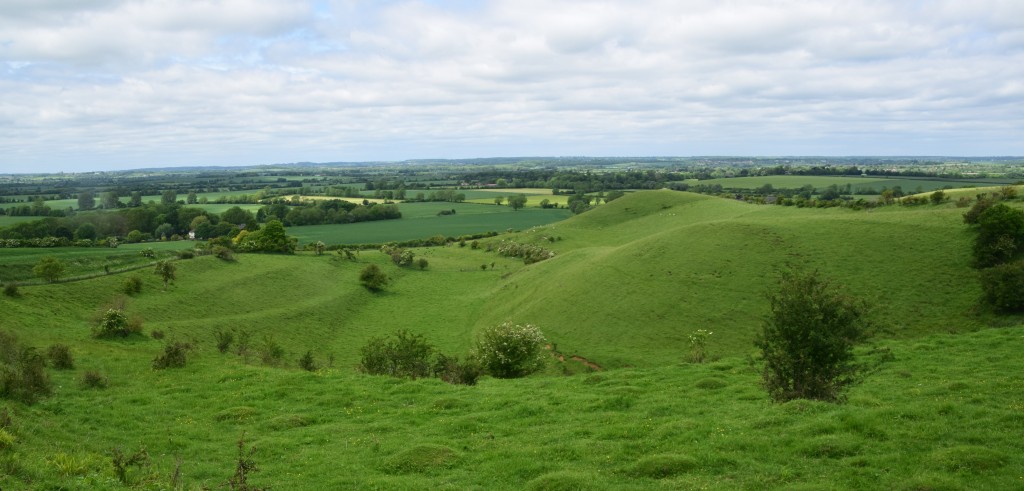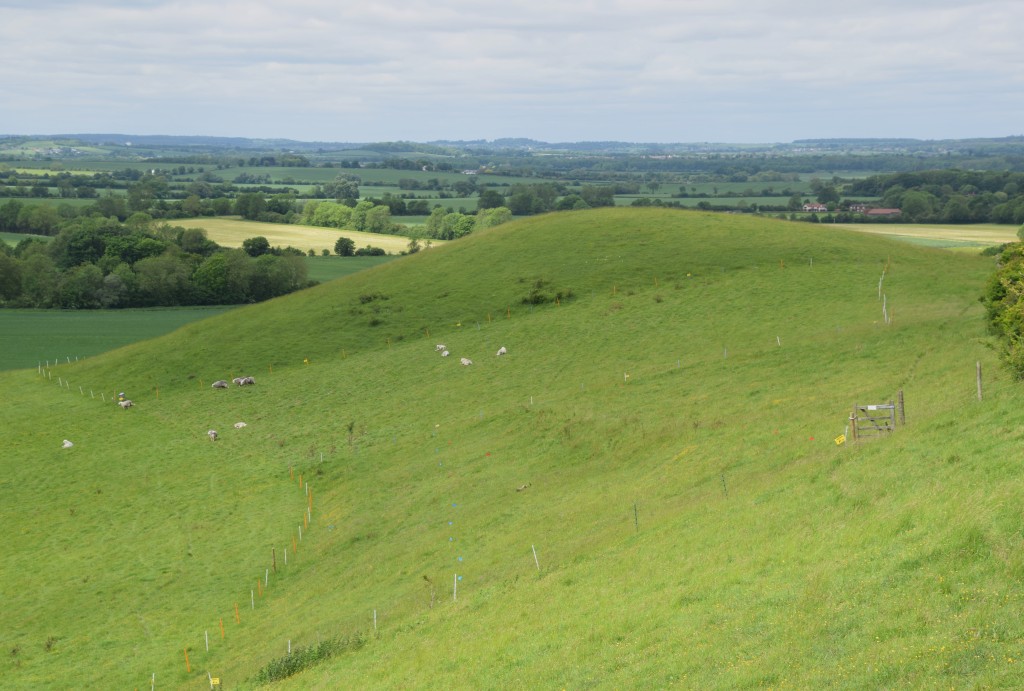This was possibly the favourite experience of my debut Orchid hunting season a year ago. I am in no hurry to rush around trying to observe everything, since I currently feel low on motivation both for insects and anything but different birds, and so would prefer this new interest to last for another season or two. Given that all the unseen stuff is early this year, observing Burnt Orchids again remained a priority. My abiding impressions first time around were of it taking four hours to find them and then how small the plants were, so now I hoped the wet spring might have produced larger subjects.
As soon as I reached the spot at Clattinger Farm (SN16 9TW – SU014932) remembered from a year ago I noted a first Burnt Orchid, then picked out three more (pictured below). This visit being two weeks earlier than in 2023 (see here), large numbers of going over Green-winged Orchids were still in bloom all around, while the as numerous Southern Marsh and hybrids were still at the emergent stage. A second cluster of my quest in Bridge Field had yet to appear, and those recorded were no larger than last year’s.
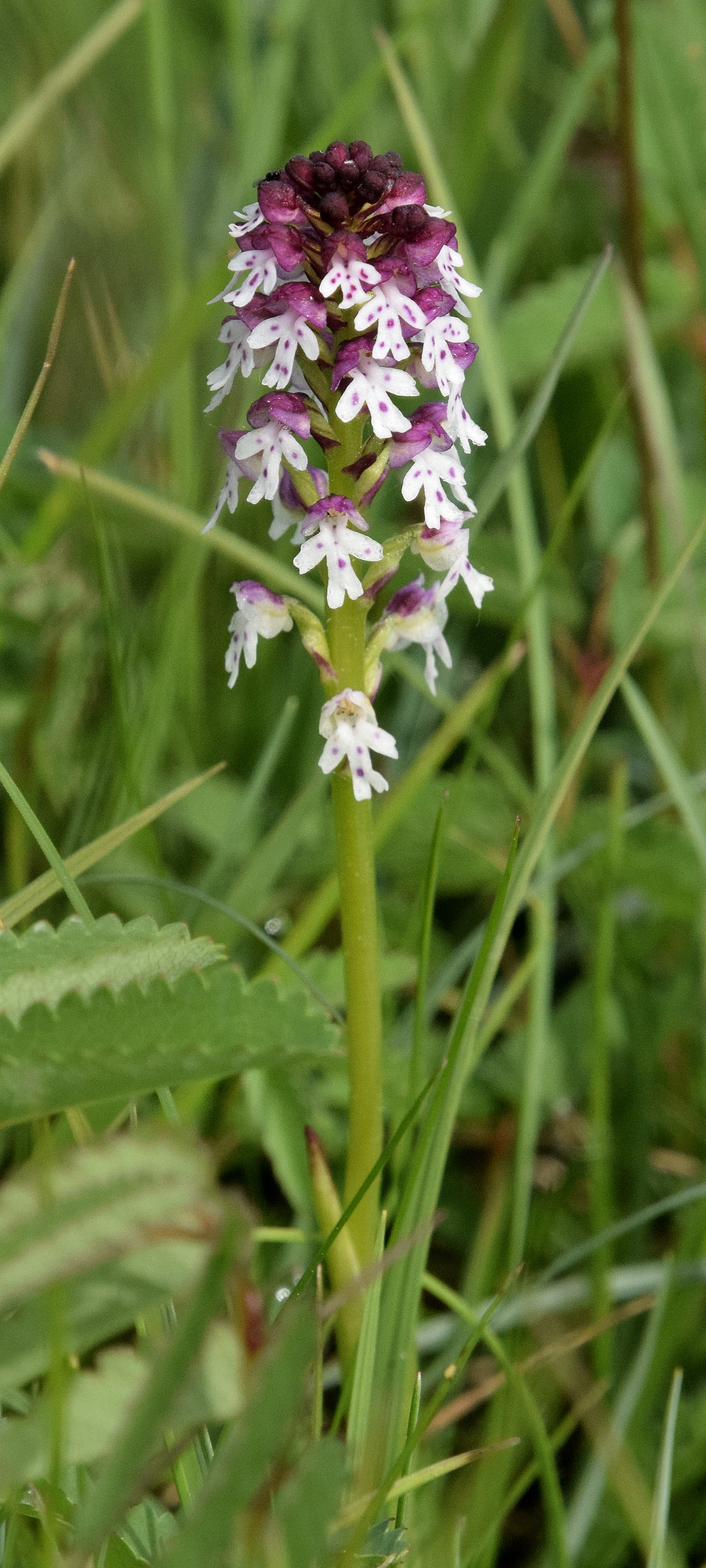
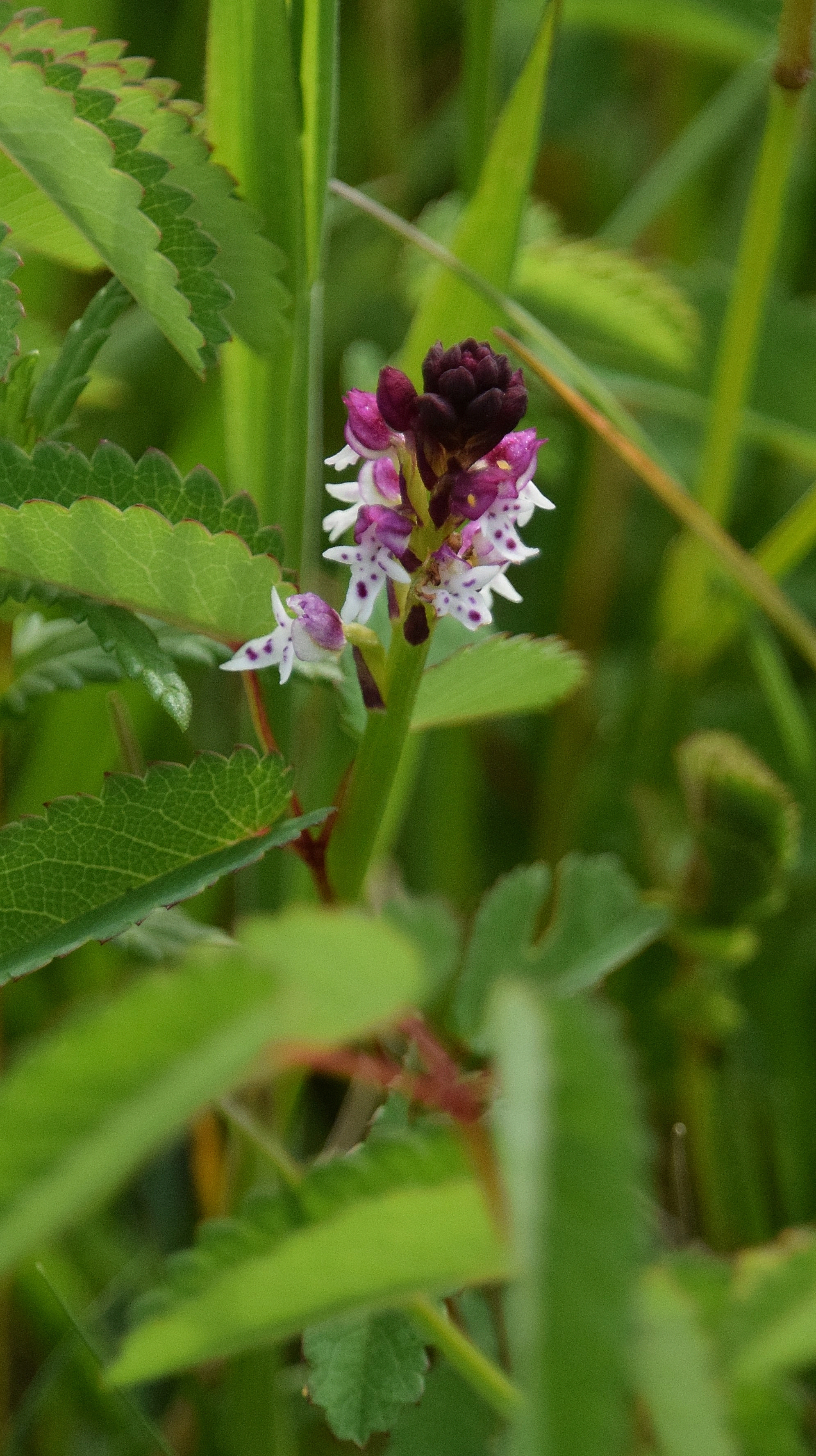
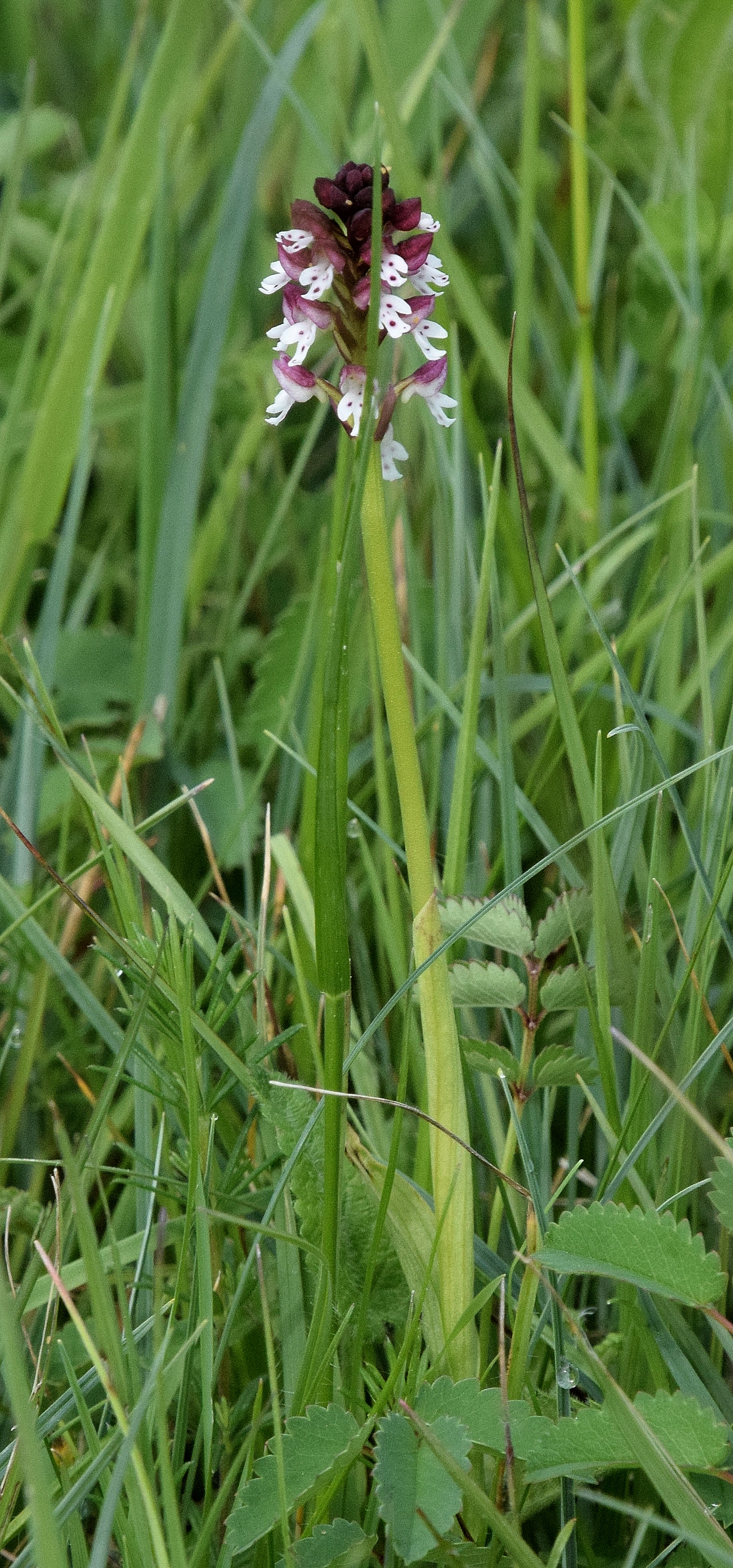

Burnt Orchids at Clattinger Farm with Green-winged Orchid (far right) for size comparison
Back at home I realised the size question is a common misconception amongst the less experienced. This is indeed one of Great Britain’s more diminutive Orchids, rarely exceeding 15 cm in height. That having been resolved, I also wished to see greater quantities and two very well-known sites suggested themselves. One was Martin Down on the Hants / Wilts border south-west of Salisbury. But I opted for the rather more intriguingly named second in this post’s title, which lies at the northernmost point of the Chiltern escarpment.
From a small lay-by (51.957186, -0.354002) on the B655 east of Pegsdon I walked back a few hundred metres then followed a bridleway northward around two sides of a private wood to the reserve entrance (51.961776, -0.352864). Knocking Hoe NNR (TL132305), an unaltered chalk grassland, is a SSSI due to its botanical diversity and the notable populations of some rare plants that it holds.
The vista before me (above) was vast, and it’s topography reminded me very much of the Devil’s Punchbowl (SU346849) on the South Oxon Downs and Rake Bottom of Duke of Burgundy note in West Sussex (see here). But where should I start to seek out the reason for coming here? At first I went in completely the wrong direction, walking downwards and along the nearest side of the pictured dry valley, finding only a few Common Twayblade. Then I retraced my steps, crossed the valley’s head then strode out along its opposite flank.
About half way along I noticed a fenced off enclosure (above) to keep the grazing sheep out, within which were red and blue flag markers. That looked promising but the protected wild plants were Pasque Flowers, one of Great Britain’s rarest for which I seemed to have found grand central. There were certainly hundreds, possibly thousands of them here, mostly gone to seed but more than I have ever seen in the wild nationally still in bloom. I didn’t attempt to take pictures for fear of trampling the habitat. Onward I forged and the hillside became more Orchid rich, with plenty of emergent Chalk Fragrant which was promising again.
The Burnt Orchid slope is on the north-facing side of the furthest hill in the second vista (above), as far from the reserve entrance as it was possible to venture, but I had just followed my instinct. Now I was rewarded with very many plants, every one of which was marked by a white tag. It is plain some very meticulous management is practiced here.
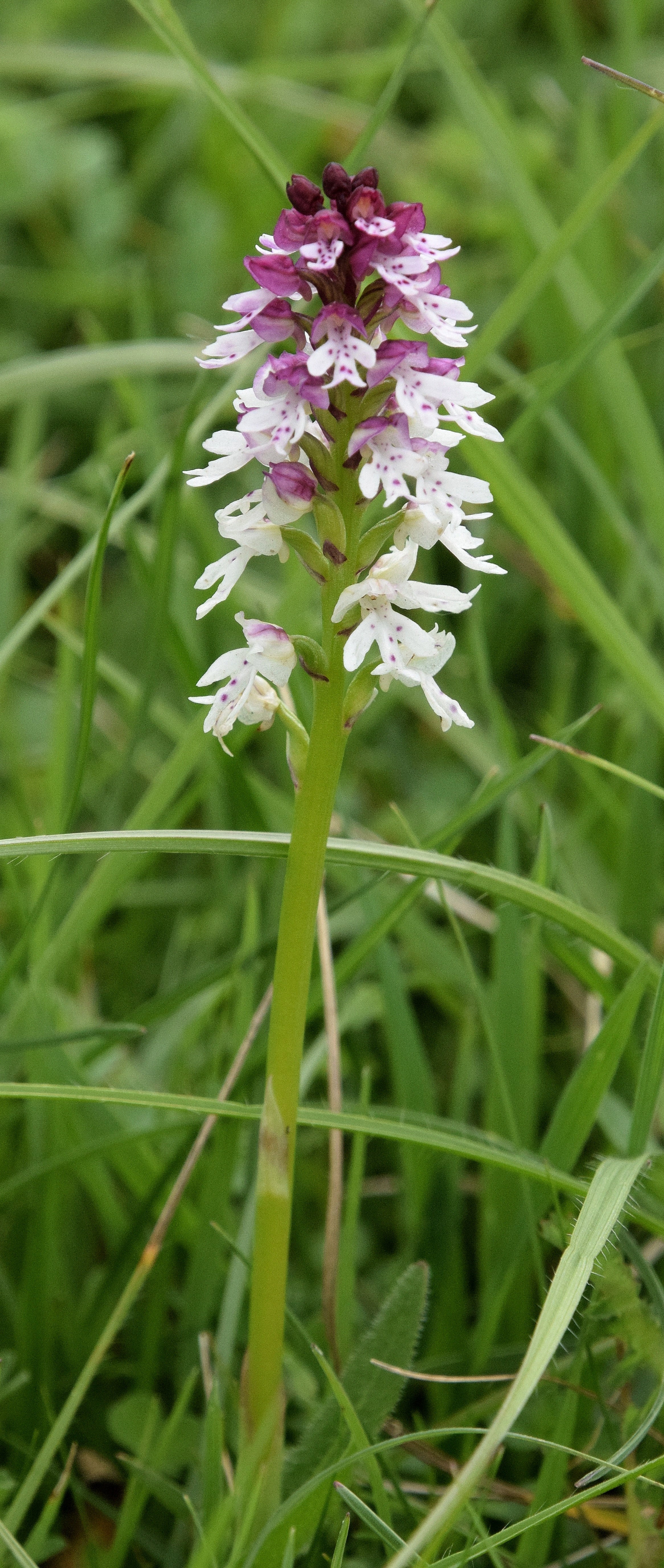
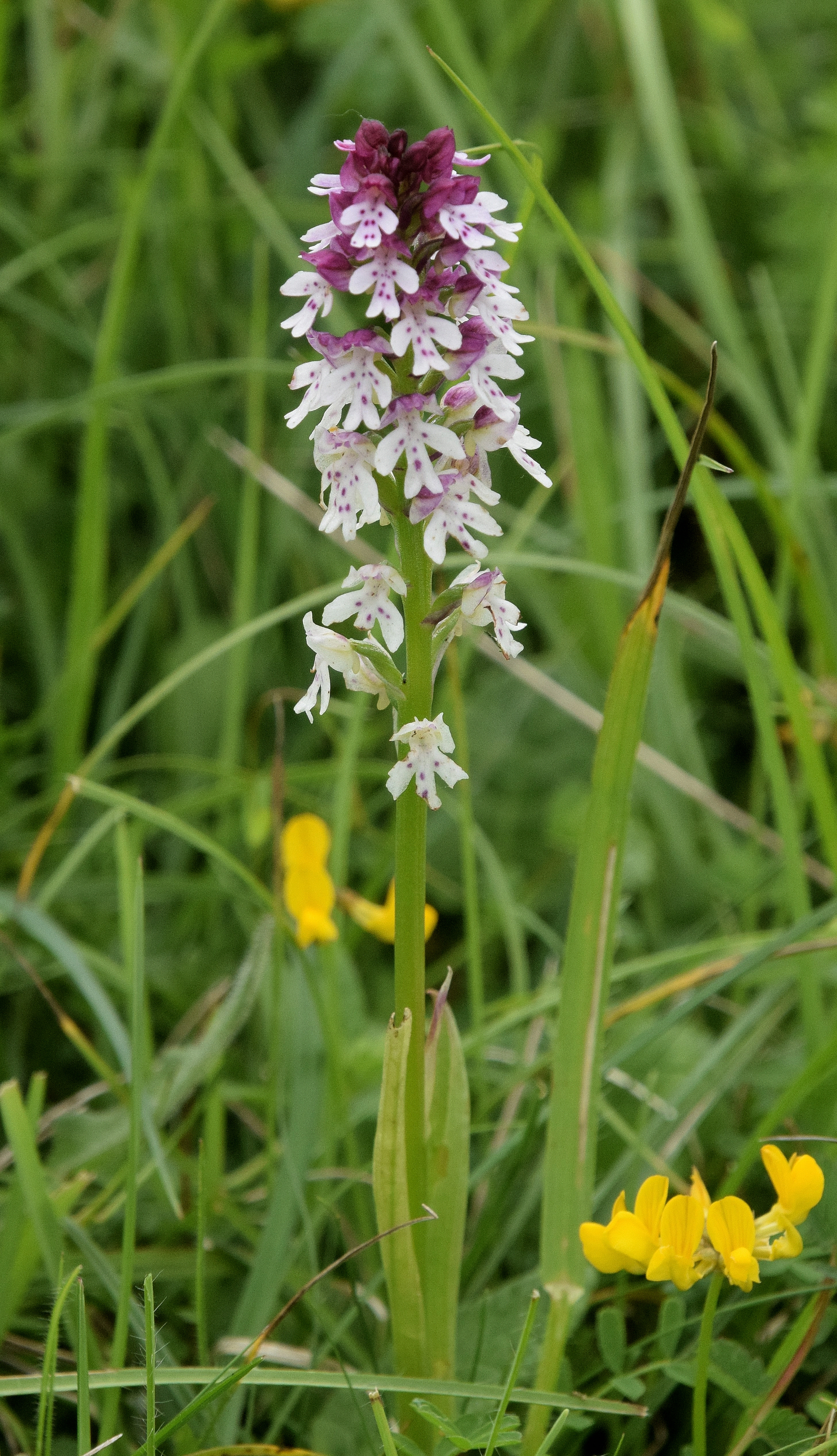
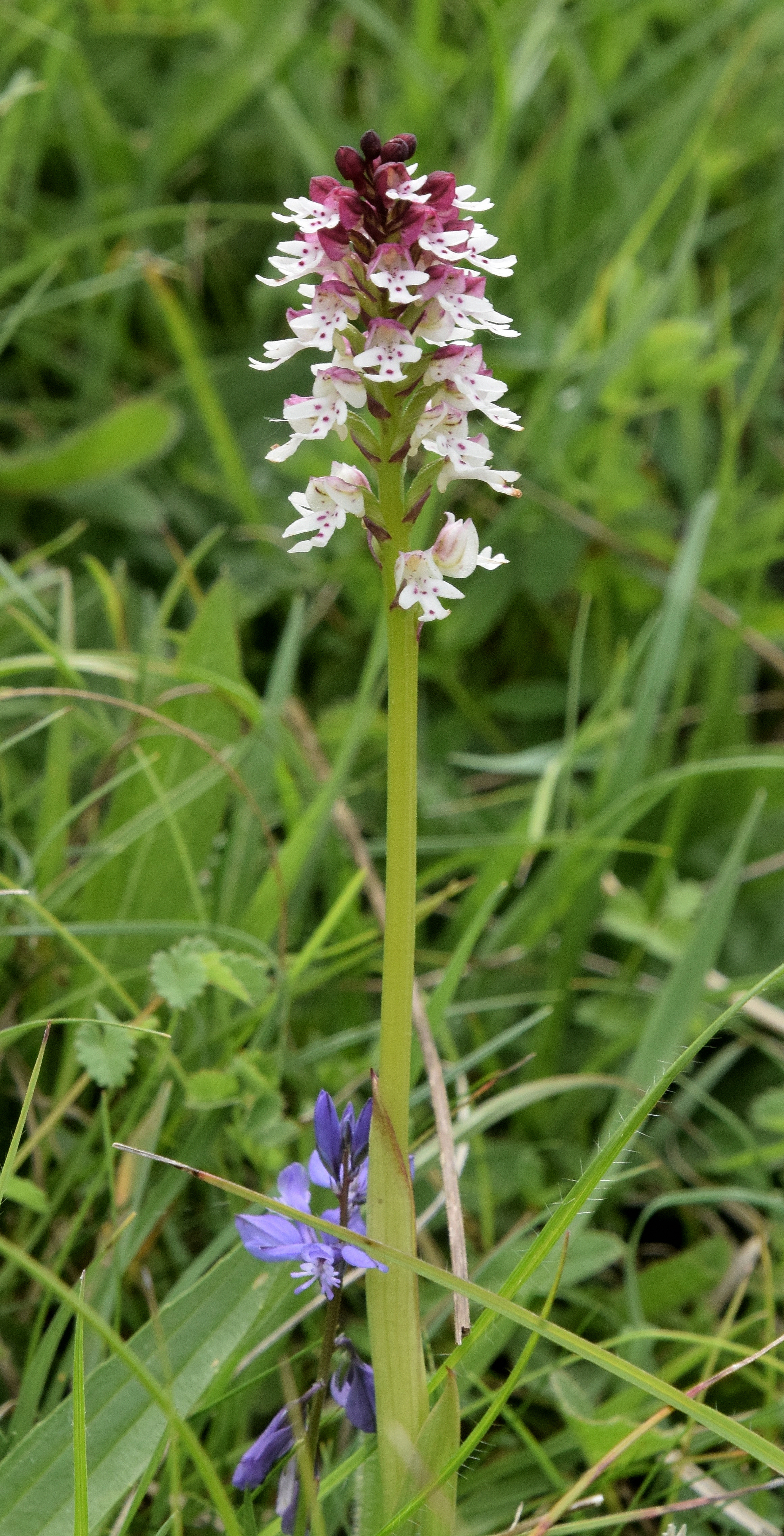

Burnt Orchids at Knocking Hoe
At first I took pictures (above) of the better, rather more developed specimens than those recorded at Clattinger Farm two days earlier. But they were not significantly larger, confirming that my past experiences were fairly typical for the species. Then I noticed a pale red and white item such as I had seen pictures of online (below, left), followed by a second variant (right). Pure white forms also exist but are very rare.
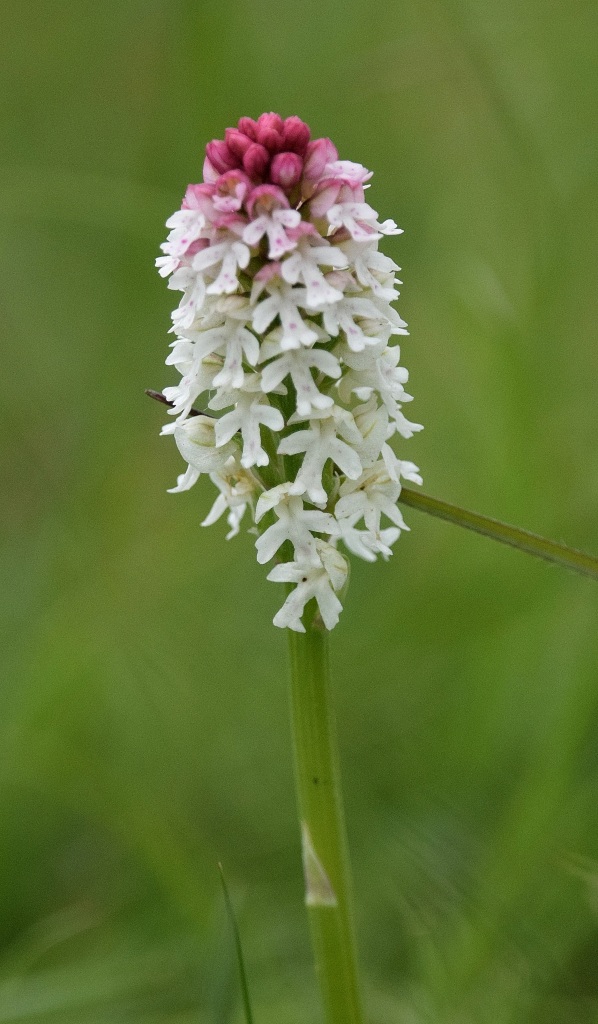
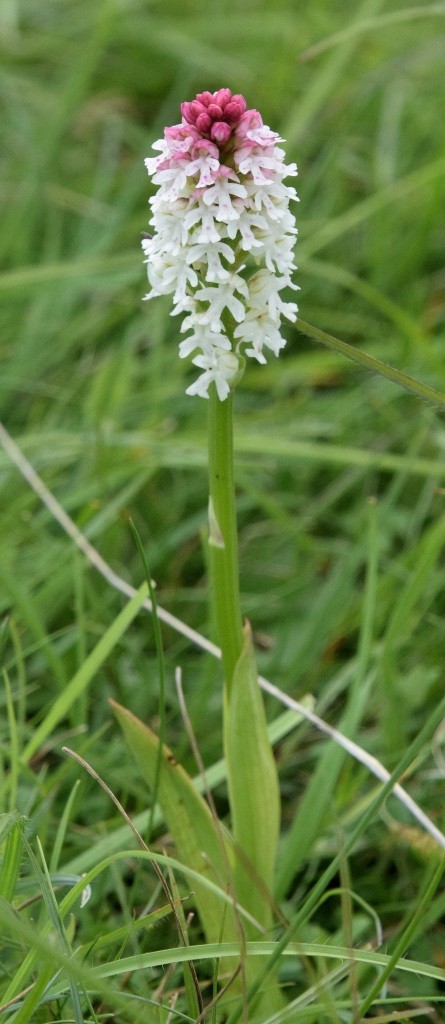
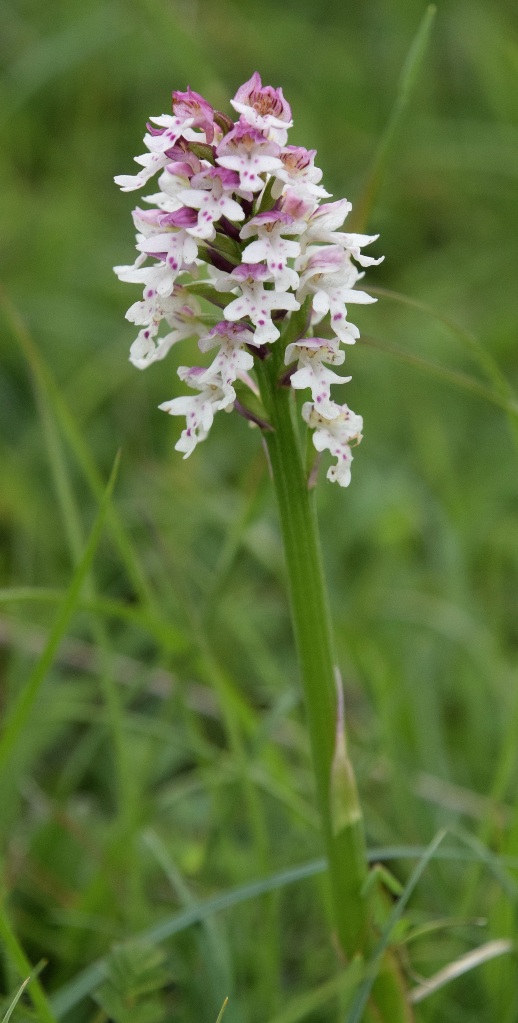
Lastly came this enclosure (above), within which there must have been more than 100 plants. Things do not get better than what played itself out here today. This was a fabulous place that cleansed my soul and refreshed my spirit, and I had it completely to myself. So Burnt Orchid is the stand out item so far in this second season, as it was in the first … and once again thank heavens for Orchids as a whole.

